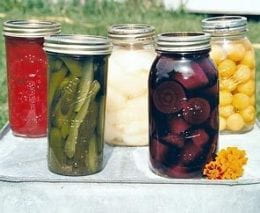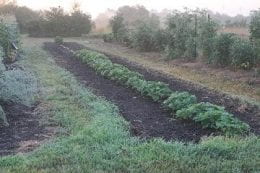Is your garden full of delicious produce such as peppers, onions, tomatoes? If so, you have the basic ingredients to make homemade salsa that you can eat with chips, or jazz up your poultry or fish. A fresh recipe from North Dakota State University is below, along with a video to help you make fun, simple, and delicious salsa!
Ingredients
- 1 to 2 garlic cloves, finely chopped
- 1/2 c. onion, finely chopped (about 1/2 medium onion)
- 1/2 large green bell pepper, finely chopped
- 1/2 to 1 whole jalapeno pepper, finely chopped*
- 4 large Roma (paste) tomatoes, chopped
- 1 small bunch of cilantro leave, finely chopped
- 1 Tbsp. lemon juice or lime juice (freshly squeezed)
Directions
Mix ingredients together and serve. Store covered in the refrigerator and use within a few days. Serve with whole-grain crackers or chips.
Makes 4 servings. Per Serving: about 35 calories, 0 grams (g) of fat, 8 g carbohydrate, 2 g protein, 2 g fiber, 25% of the daily value for vitamin A and 70% of the daily value for vitamin C.
*Note: Be cautious when handling jalapeno peppers. Wear plastic gloves if possible and wash your hands thoroughly. The “heat” is in the seeds and veins. This salsa recipe is not suitable for canning.
By: Ashley Svaty





